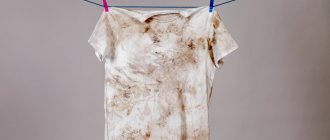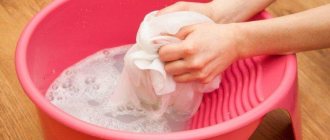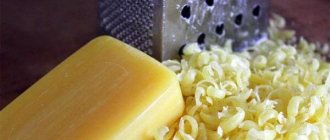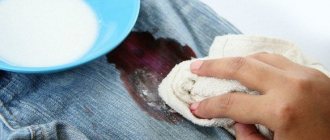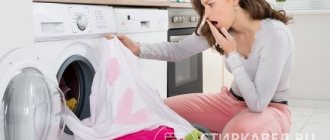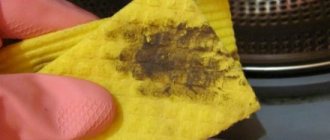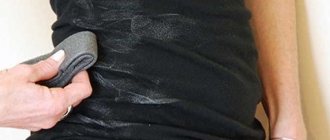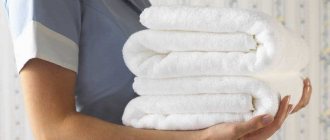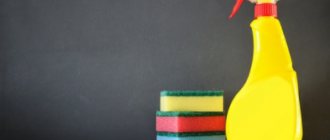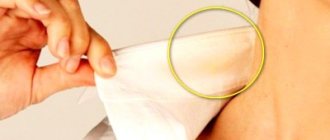The birth of children in a family is always associated with pleasant troubles and constant worries. One of the main issues that every mother once faces is washing children's clothes. It must be said that the procedure is extremely important, because the health and well-being of the growing child depends on it.
Baby clothes require delicate handling, and washing them is somewhat different from washing adult clothes. Especially often you have to monitor the cleanliness of the bed linen and clothes of the smallest toddlers. Therefore, it is necessary to be careful when choosing washing powder and washing methods themselves.
Basic rules for washing children's clothes
b Each parent independently decides which washing method to use. Some people prefer to wash by hand, while others give this right to a washing machine. Moreover, most modern washing machines have a special mode for children's washing. It carefully removes even the most stubborn stains. It is also worth using the extra rinse mode. Parents are advised not to mix their clothes with their child's laundry and wash them separately. This way you will protect your child.
There is an opinion that children's clothes must be boiled. This is nothing more than a myth. Washing is carried out according to the instructions on the product label. This way the item will last longer and will not lose its original appearance. But what is really important is rinsing things. It is done extremely carefully and in several approaches. This reduces the risk of interaction between the child and the detergent.
Don't forget to wash new items you just purchased from the store. After all, only at first glance does it seem that the clothes are clean. In fact, a large amount of dust contained in the air settles on it. In addition, many people have repeatedly picked up the product, testing it for strength, softness, and quality.
Dry laundry must be ironed so that it becomes softer and has an acceptable appearance. Ironing is carried out on both sides of the product.
Cleanliness and freshness are easy
Parents want to see their children not only neat and neatly dressed, but also cheerful, active and sociable.
Excessive comments sometimes help solve the first problem, but at the same time negate such important qualities of the child as sociability and cheerfulness, openness to new and interesting things.
Knowing how to deal with troubles - dirt and numerous damages caused to children's clothing - will allow you not to spoil your child's mood for no reason, but to simply and quickly deal with the problem that has arisen.
Choosing the right cleaning products
Washing powders, gels, rinse aids and soaps are also intended for children's clothes, but their difference lies in their less aggressiveness and gentle composition. Since parents are constantly in contact with the child, their clothes should also be washed using children’s products, but separately.
When choosing a product, pay attention to the presence of the line “from the first days of life.” Such an inscription is a guarantee that the products were thoroughly tested in production, taking into account strict selection criteria. This purchase will help you quickly and carefully remove any stains.
Don’t be lazy to read and decipher the composition, even if it is written in very small print and is not always clear. The composition should not include aggressive substances. Otherwise, skin allergies may occur upon contact with the child's skin. The baby's skin is delicate and thin, so it requires careful treatment.
It is desirable that the composition contains natural soap. This powder will produce less foam and will be washed off well with water. And in no case should you give preference to powders containing phosphates.
As for the fabric softener, it should be taken without strong odors and fragrances. Remember that your baby's sense of smell is much more sensitive than yours. Even if you like the scent of the product, it can harm your child.
How to soften your baby's underwear after washing
Do not use fabric conditioners or fabric softeners. Such products contain phosphates and other chemical compounds harmful to the baby’s delicate skin. To soften baby clothes before wearing them, iron them on both sides by selecting the steam mode on the iron. Modern automatic washing machines can handle heavy stains, so it is not necessary to pre-wash your clothes.
Traditional methods of washing children's clothes
Some parents try to avoid chemicals, even in minimal quantities. Therefore, they trust folk remedies more. Let's look at the main ones.
- Tropical states have introduced us to a new type of laundry detergent - soap nuts. They do not cause allergies and are suitable for both washing machines and hand washing.
- To keep things white, use boric acid, hydrogen peroxide and regular baking soda.
- A less popular method is to use ash, soap root, mustard and potato juice.
How to remove old stains on children's clothes
All children are extremely restless and inquisitive. And it is not surprising that while exploring the world, a baby can get dirty at any moment and ruin a new blouse or shirt. Stains can be varied: from grass, soil, paints, plasticine, drinks, food and more. It happens that the contamination was not immediately detected by the mother and had time to dry out and be thoroughly absorbed into the fabric. Therefore, it will be useful for parents to learn how to deal with washing stubborn stains.
- Take 150 g of baby washing powder and mix with a few tablespoons of bleach, add the same amount of oil. It can be either vegetable or olive, this will not affect the effect. For better results, add a stain remover to the mixture if it is available on the farm. Pour warm water into a five-liter basin and dilute the mixture in it. We put the dirty clothes in and soak them until morning. The next day we wash things in the usual way. Many people also add acetic acid to this solution.
| Be careful! Bleach should only be used when washing light-colored items. Otherwise, you risk discoloring the fabric and ruining the item forever. |
- To remove stubborn stains, we will need to take 10 g of baking soda, dishwashing detergent and hydrogen peroxide in equal quantities. Mix until thick. Apply the solution to the affected areas, rub into the fabric and leave for half an hour. Then add stain remover and wash as usual.
Which is better: hand washing or machine washing?
It is impossible to answer the question of whether hand washing or machine washing is better. Each method has its own strengths.
Automatic wash:
saves time and effort;- allows you to wash a fairly large volume of things at a time;
- thoroughly squeezes out moisture after washing, which allows things to dry faster;
- makes it possible to wash at very high temperatures;
- rinses products well, since if necessary, you can always install an additional rinse.
When processing manually:
- it is possible to thoroughly wash certain areas;
- High hygiene is maintained if a separate basin is allocated for children's things;
- things are handled delicately;
- you can clearly separate children's objects from adults by highlighting a separate basin;
- You can use a wider range of detergents.
Regardless of the choice of washing method, only special detergents that are intended specifically for children's clothing should be used. Sorting items by fabric type and color is also necessary.
Ways to combat fruit and berry stains
If you immediately soak a stain from a banana, peach or apple in warm water, after adding citric acid to it, then not a trace of dirt will remain. The solution is prepared in a ratio of 1 tablespoon of acid per 1 liter of water.
With old fruit stains the situation is somewhat different. This is where laundry soap comes to the rescue. Rub the dirt thoroughly with it and leave to soak for 2 hours. Then wash using the usual method.
In cases where all means fail, a more aggressive option is used - turpentine. A cotton swab is moistened in it and the stain is rubbed, moving from the boundaries of the contamination to class=”aligncenter” width=”500″ height=”340″[/img]
In extreme cases, medical alcohol is also used. It is mixed with a pinch of citric acid and rubbed into the stain. Then the product is washed with baby powder.
Getting rid of stains on light-colored items
On light-colored clothes, even the smallest stain becomes noticeable. Therefore, it is worth thinking about how to avoid such situations. The most popular solution for washing white clothes is hydrogen peroxide. You can do the same with dark things, but be much more careful, as discoloration may occur. So, how to save light-colored clothes from stains:
Pour a few drops of hydrogen peroxide onto the stain and iron it with a hot iron. Then we do the washing with washing powder.
We prepare a solution of ammonia, hydrogen peroxide and soda in equal proportions. Apply to the contaminated area, then rub with laundry soap and wash.
If you have lemons at home, then using freshly squeezed juice you can easily get rid of the stain. We treat the clothes with juice and wait 2 hours. Then we wash it in the machine. Citrus can also be replaced with citric acid.
Important points when working with old stains
Removing stains from the surface of children's clothing should be carried out according to the following rules:
- It is better to avoid ready-made detergents. Ordinary powders cannot always remove old stains, and the use of formulations with phosphates can negatively affect the child’s health.
- If for some reason it is impossible to use natural products, you can try to treat children's clothes with enzyme-based gel powders. They usually contain detergent extracts of plant origin, so they are safe for children's skin. True, you will have to do several approaches to completely remove the contamination.
- Washing and pre-soaking are recommended to be carried out at the maximum permissible temperature. This will not only increase the effectiveness of the approach, but also prevent the development of pathogenic microorganisms.
- It is not recommended to mix clothes of children and adults when washing, even if the stains on the fabric are of the same nature.
- Before you start treating stains, you should try to determine their origin or quality. Grease stains often penetrate right through the fabric and are visible even from the reverse side. They do not have clear boundaries and after some time they become dull. Old traces without fatty components oxidize under the influence of ultraviolet radiation and acquire shades from yellow and brown to rusty.
Stains of any nature can be washed off without leaving a trace if you follow the instructions strictly. We turn the item of clothing inside out and place a white cotton cloth or several paper napkins under the problem area. Apply the selected product to the stain using a cotton pad. First you need to process the edges of the stain, then it will not spread. Next, we move from the periphery to the center until we can completely remove the formation.
We recommend: How to refill the printer and how to wash the paint off your hands if you didn’t do it very carefully?
Removing stains from delicate clothes
Delicate items require careful handling and washing. Aggressive substances are definitely not suitable for them, as they will only ruin the structure of the fabric. Glycerin mixed with ammonia will help remove stains from silk and satin. Prepare a solution: combine 10 g of glycerin with a few drops of ammonia. Apply the mixture for 15 minutes, and then rinse with warm water.
Children's woolen items are also designed for gentle hand washing. The same method as for the atlas will work here, only you need to double the proportions.
Do new products need treatment?
At first glance, new children's clothing seems clean, very soft and fresh. But in fact, it also needs to be washed.
After removing the packaging and tags, all children's things (bed linen is no exception) should be washed.
This is necessary due to the fact that any textile items:
- pass through many hands (viruses, dirt, etc. can get on them);
- may contain residues of dyes and chemicals, etc. on their surface.
Depending on the type of product, one of the following types of processing can be performed:
- wash;
- washing and ironing;
- use of a steam generator.
Clothes for newborns and underwear for older children, who are subject to increased safety requirements, require special attention.
You can find out about the rules for washing clothes for newborns here.
